Cruising Canada and New England
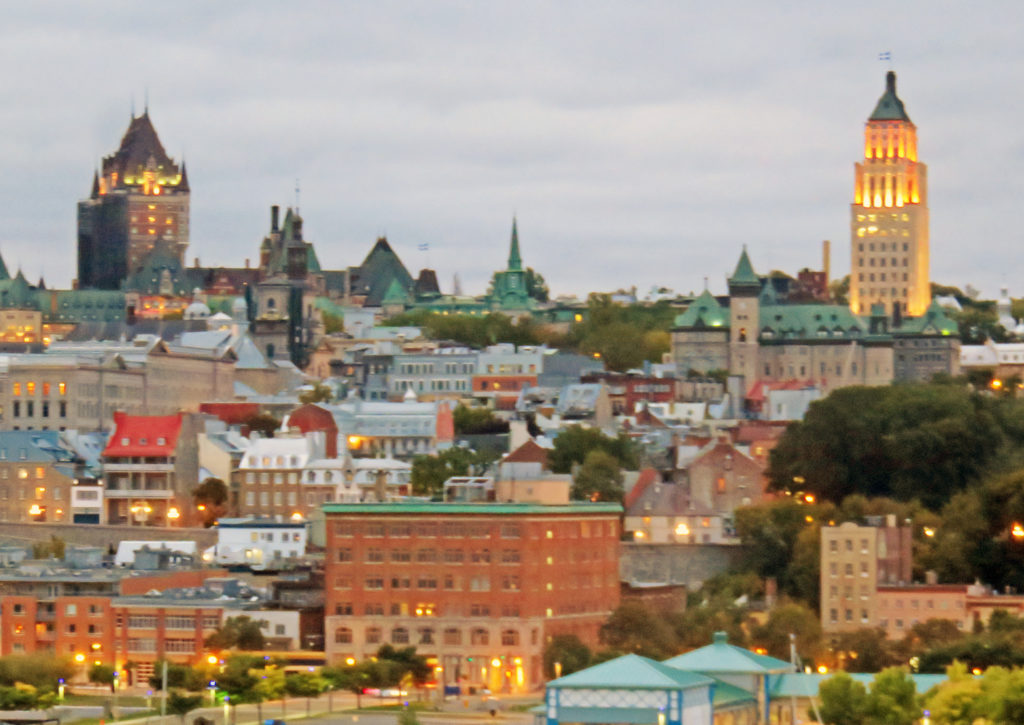
Our view of the Quebec City skyline from our cruise ship.
September 16, 2019
We awoke to a beautiful morning in Quebec City after arriving on a late-night Air Canada flight. We were aboard the Holland America cruise ship Zuiderdam and ready to start our twelve day “Colors of Canada and New England” cruise. We looked forward to our day touring Quebec City, the oldest city in Canada, and its surrounding areas.
After a hearty breakfast we climbed aboard a tour bus and readied ourselves for a four- hour journey through the countryside. Our guide was a Quebec native who gave us an almost continuous narration as we crossed over the St. Lawrence River to the island of Orleans.
The entire island is a designated historical area and has a traditional French countryside feel. Orleans was one of the first parts of the province to be colonized by the French, and a large percentage of French Canadians can trace ancestry to early residents of the island. Some of the houses are 300 to 400 years old and limited to the height of four stories in support of the government’s historical preservation efforts.
The island, about the size of Manhattan, supports farming and many forms of agriculture all year-round. We passed by cows, corn, strawberries, apples, grapes and many homes decorated with colorful flower boxes. The vineyards on the island feature cold-tolerant grapes that can survive to -30 degrees C. Many maple sugar products are produced on the island. The province of Quebec generates a large percentage of the world’s supply of maple sugar.
Our first stop was at the L’ En-Tailleur sugar shack, a popular place for the locals during the maple sugar season. The collecting of maple water to use as a sweetener was first practiced by indigenous people who tapped maple trees each spring. During the sugaring-off season, days were filled with trudging through the snow to collect maple water from buckets. At night, families would gather for a meal of hearty homemade delights and celebrate with the sound of fiddles.
In the shack the ninth-generation owners gave us a presentation on maple sugar production and showed us the vats where the maple water was boiled down to produce a taste of heaven. The highlight of the stop was sampling maple syrup that had been dribbled in a line onto man-made snow which instantly solidified into a soft mass and then was rolled up onto a large flat stick for tasting. Before we left, we were ushered into the sugar shack store where we were confronted with a mouth-watering array of maple sugar products.
After crossing the bridge into Quebec, we drove to Montmorency Falls. The falls are located at the mouth of the Montmorency River and plunge 275 feet into the St. Lawrence River. We walked down a wood-paved path to a scenic overlook and had a magnificent view of the cascade falling from a high bluff to sea level. We also had an excellent view of helmeted and harnessed zip liners crossing the ravine within feet of the falls. At the base of the falls on a small sand beach amid scattered driftwood someone had spelled out a “Will you marry me” message in logs. We hope the answer was “yes”.
We arrived back at the ship and boarded another shuttle for Old Quebec City. After many twists, turns and climbing, we arrived in the center of the old fortified section of the city. It was the only fortified wall city remaining in North America and a UNESCO World Heritage Site. We were dropped off next to Le Chateau Frontenac. The 5-star, 600 room hotel was built by the Canadian Pacific Railroad as part of a string of hotels the company constructed across the country at every major stop.
We walked around the upper town area on narrow winding one-way streets lined with bistros, boutiques, antique shops and horse drawn carriages. We had a dramatic view of the St. Lawrence River from the escarpment fronting the Le Chateau Frontenac. Quebec City was founded by the French explorer Samuel de Champlain early in the 17th century. The ramparts, gates, and other fortifications that surround the city serve as a rock-solid reminder of its role in the colonial wars for control of the Americas. Fountains and bronze statues abound with a representation of the explorer Champlain being particularly prominent. It truly was a magnificent city and we would be back to explore again.
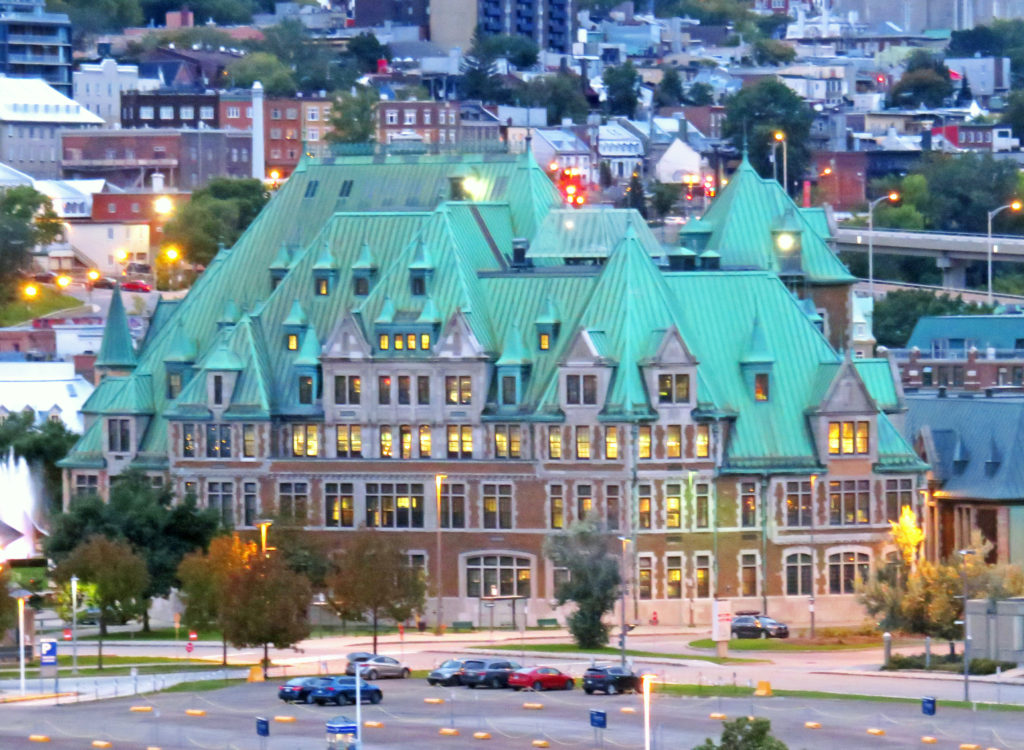
Early morning views of Quebec City.
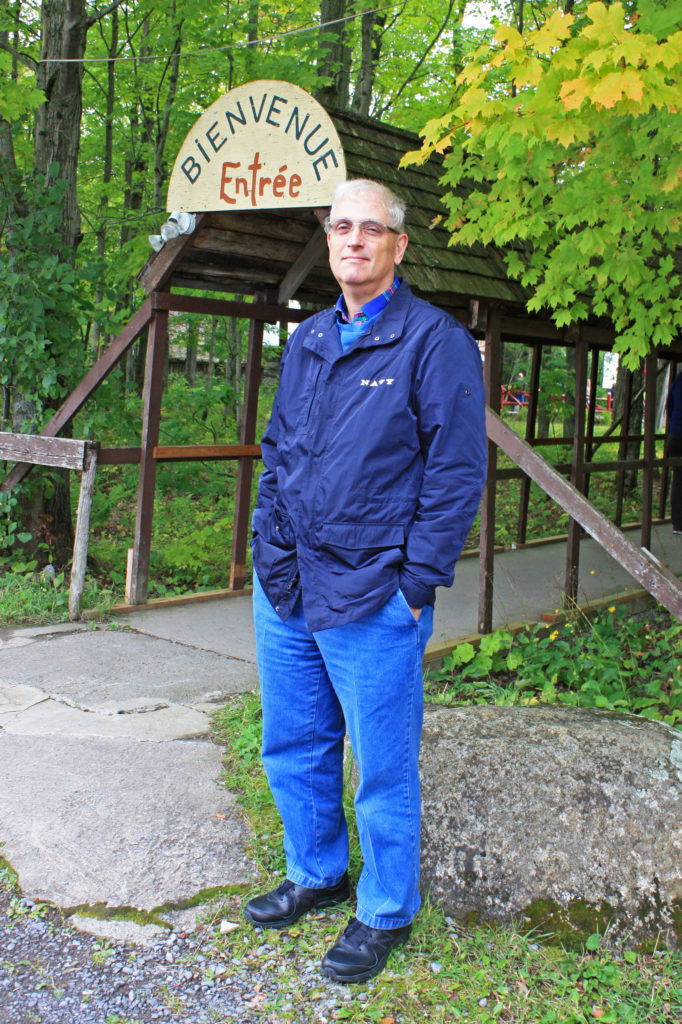
Rodge standing at the sugar shack entrance.
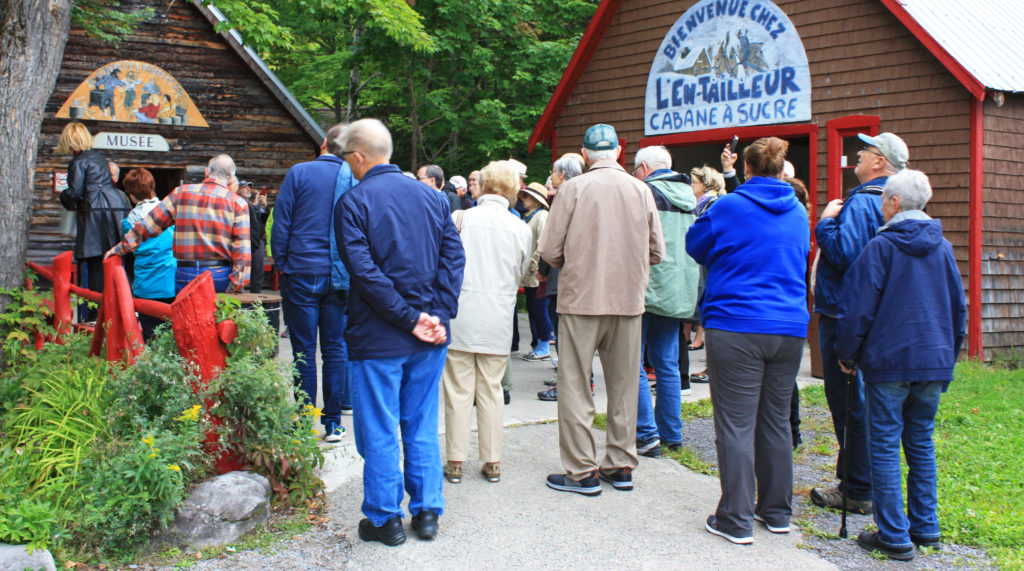
Waiting for our tour of the sugar shack.
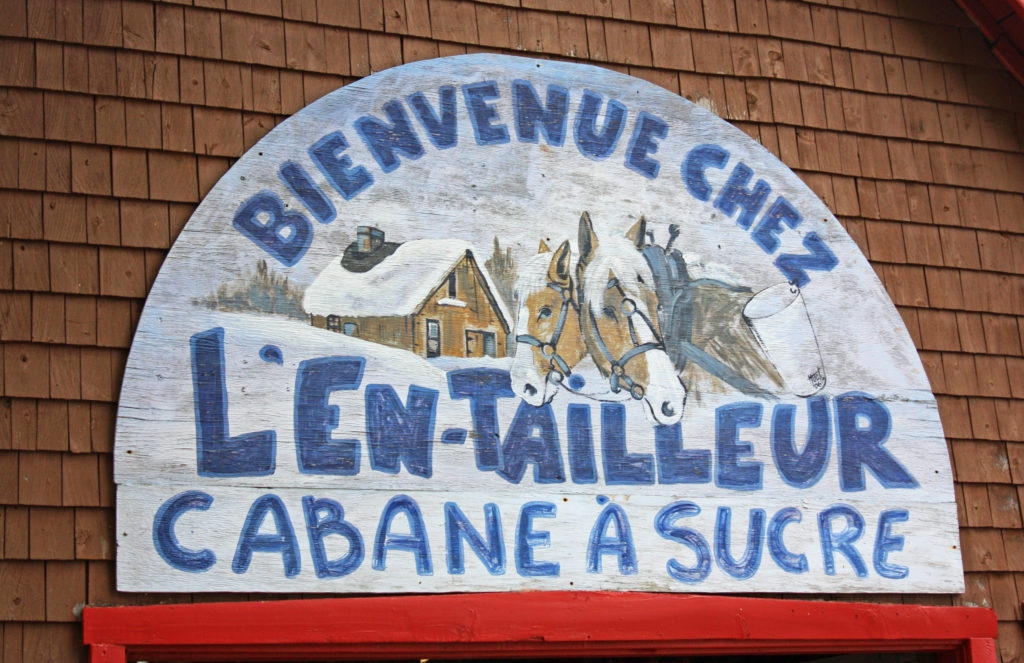
The L’ En-tailleur sugar shack.
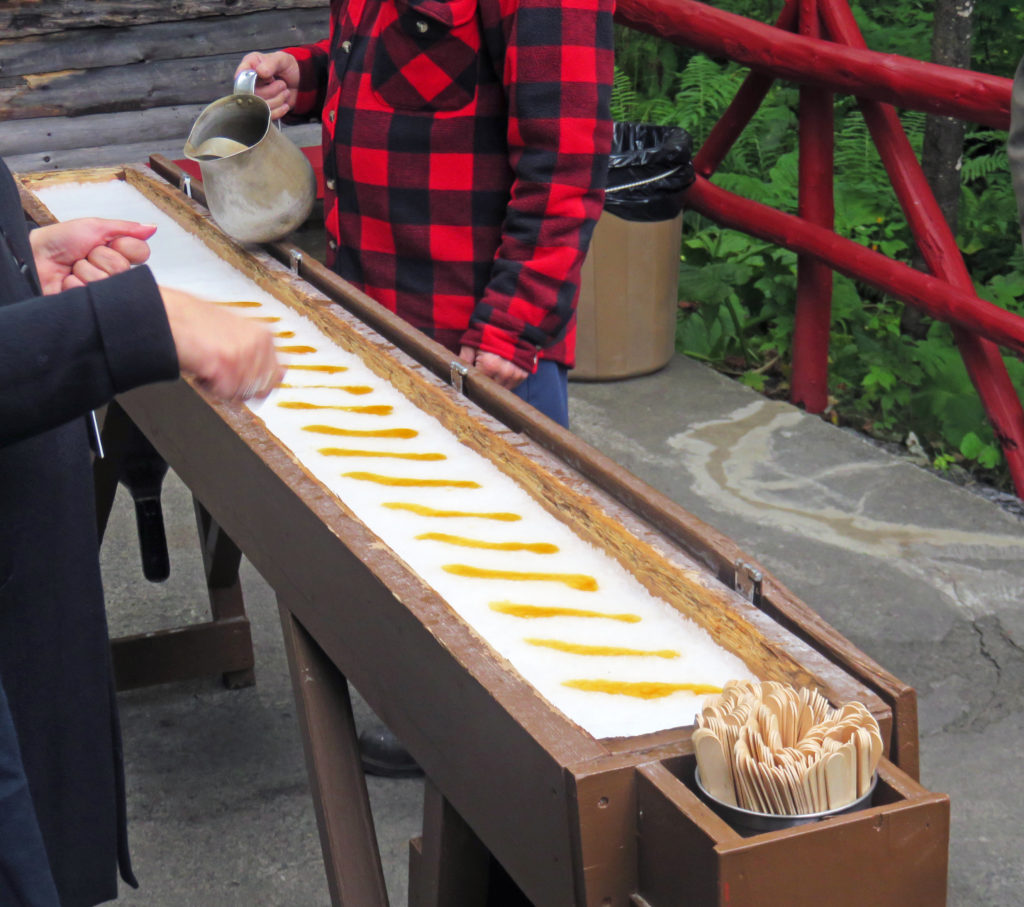
Maple syrup dribbled in a line onto man-made snow.
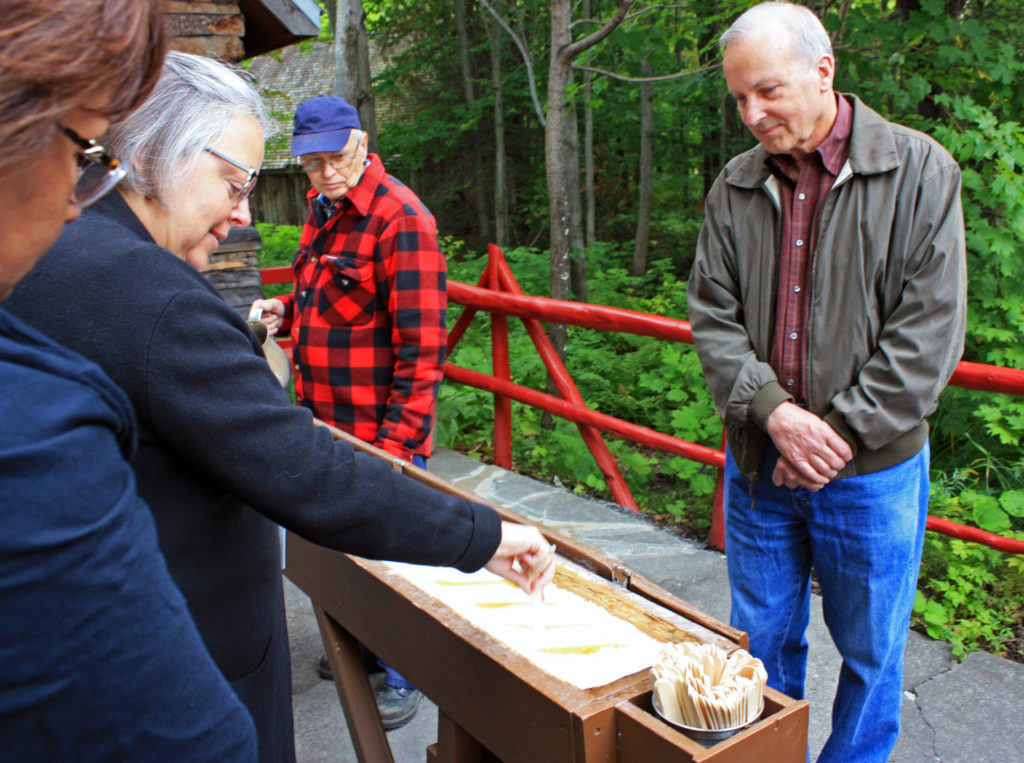
Rolling solidified syrup onto a stick.
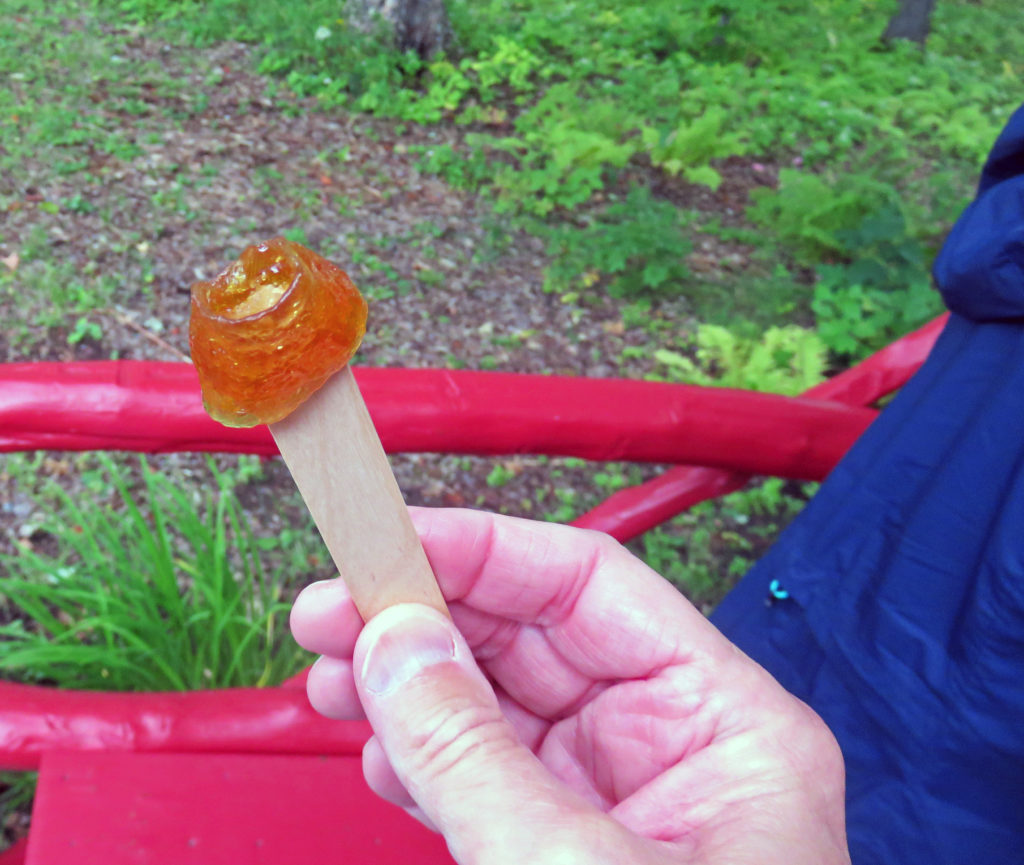
A solid mass of maple syrup.
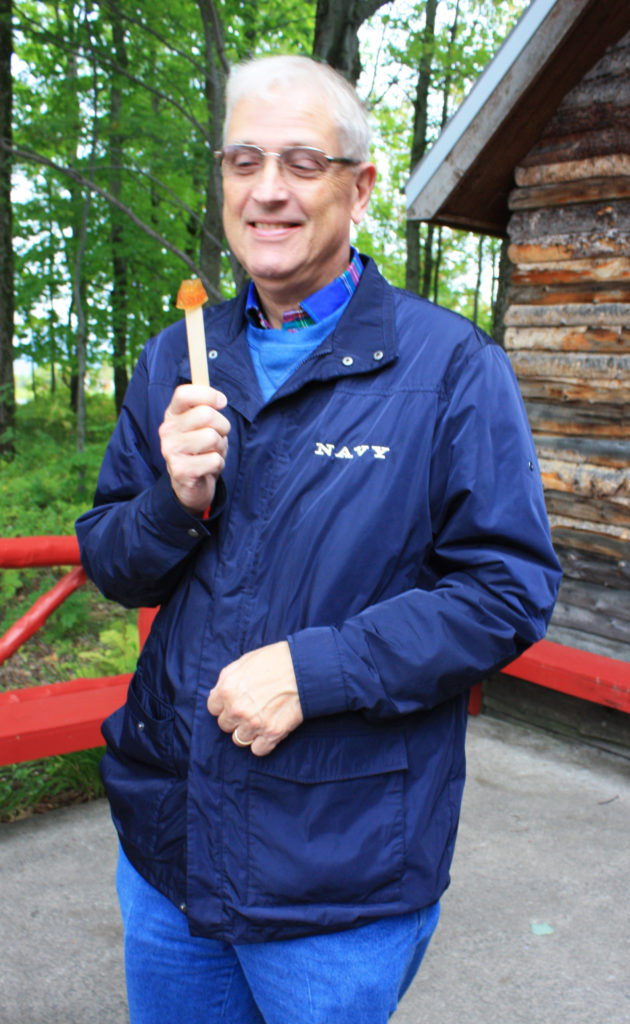
Ready to sample a taste of heaven.
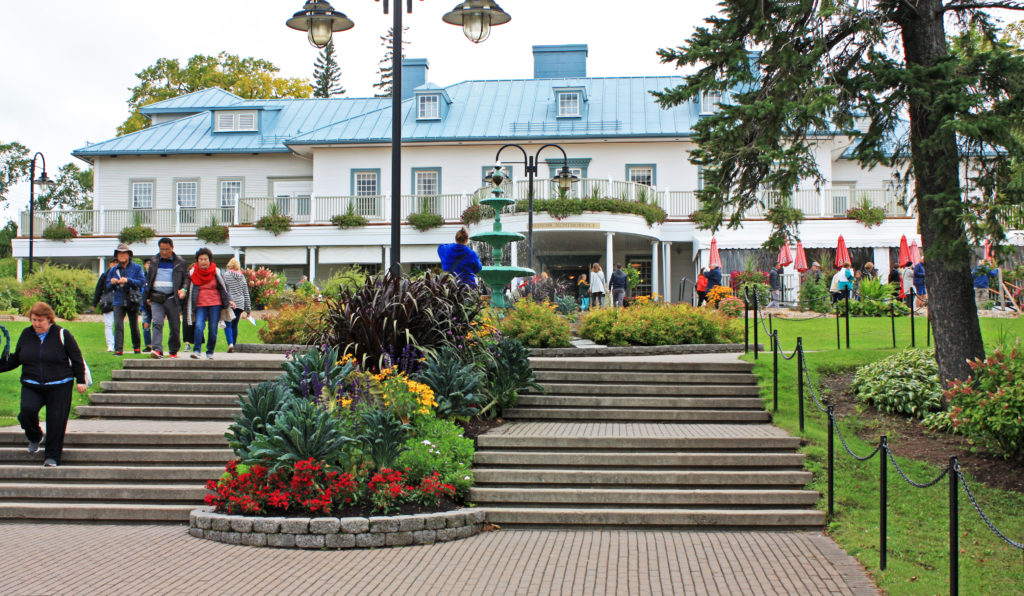
The Manour House at Montmorency Falls.
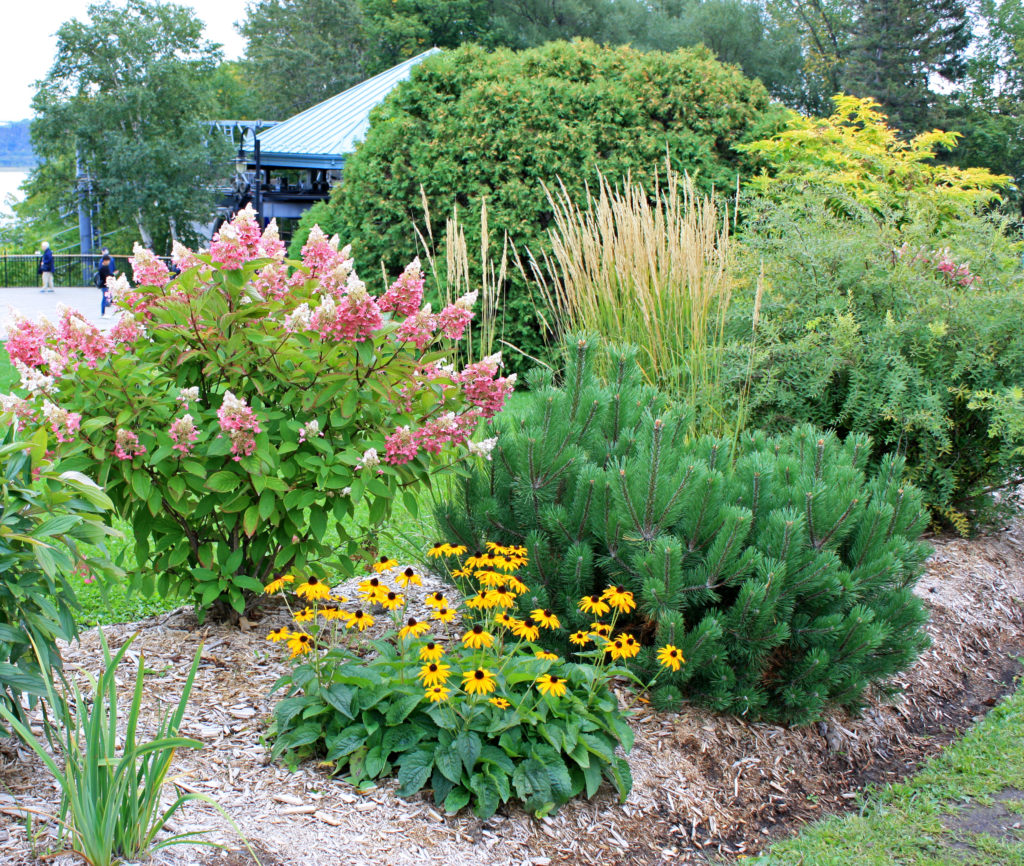
Gardens at Montmorency Falls.
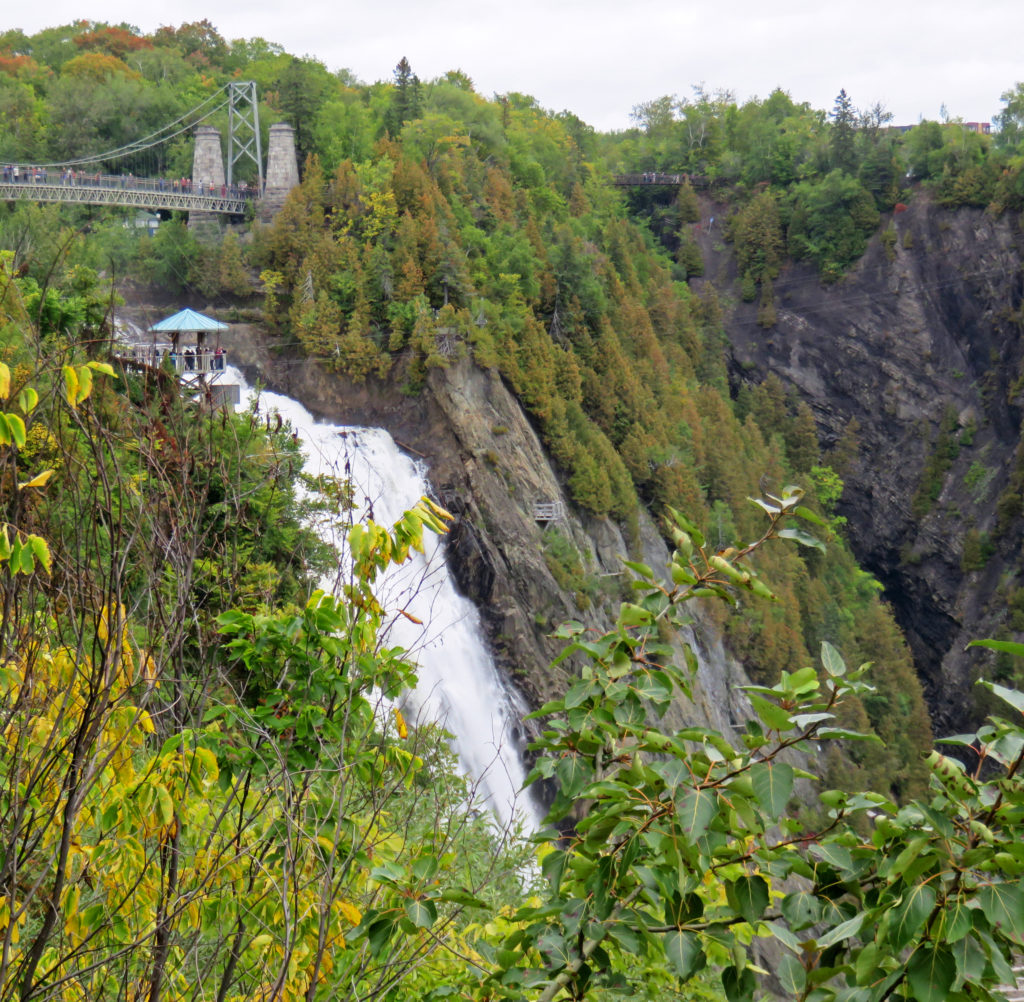
The waters of Montmorency Falls plunge 275 feet into the St. Lawrence River.
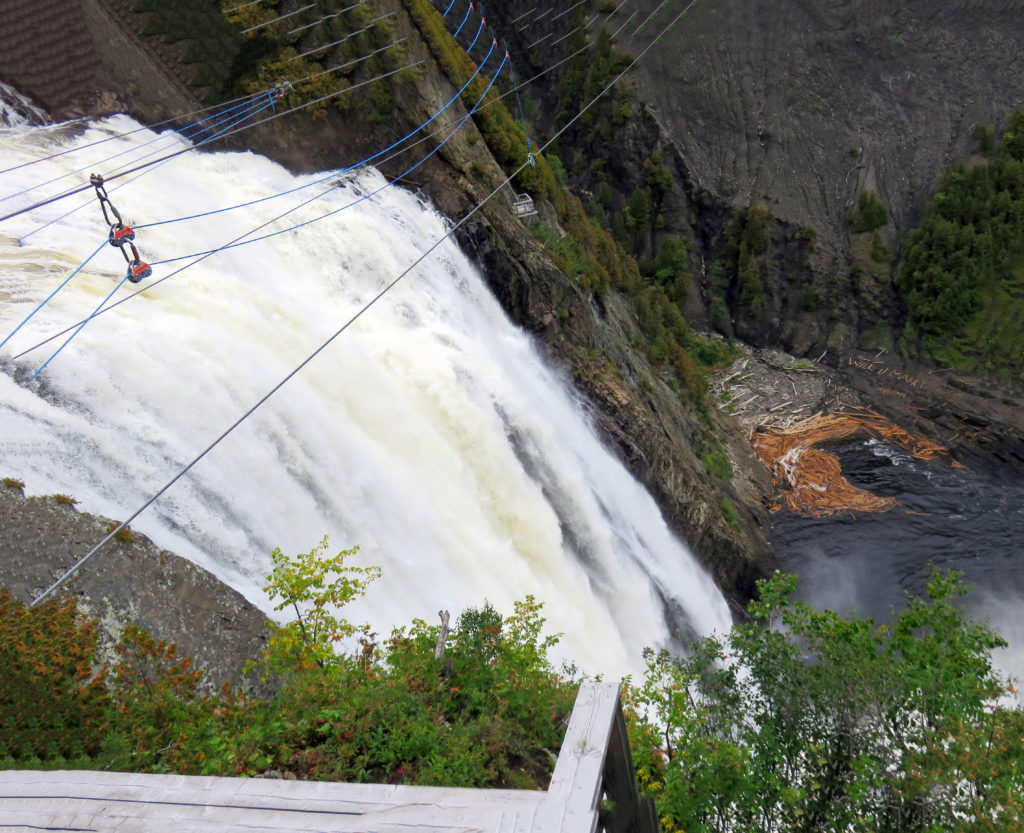
Zip lines cross in front of Montmorency Falls.
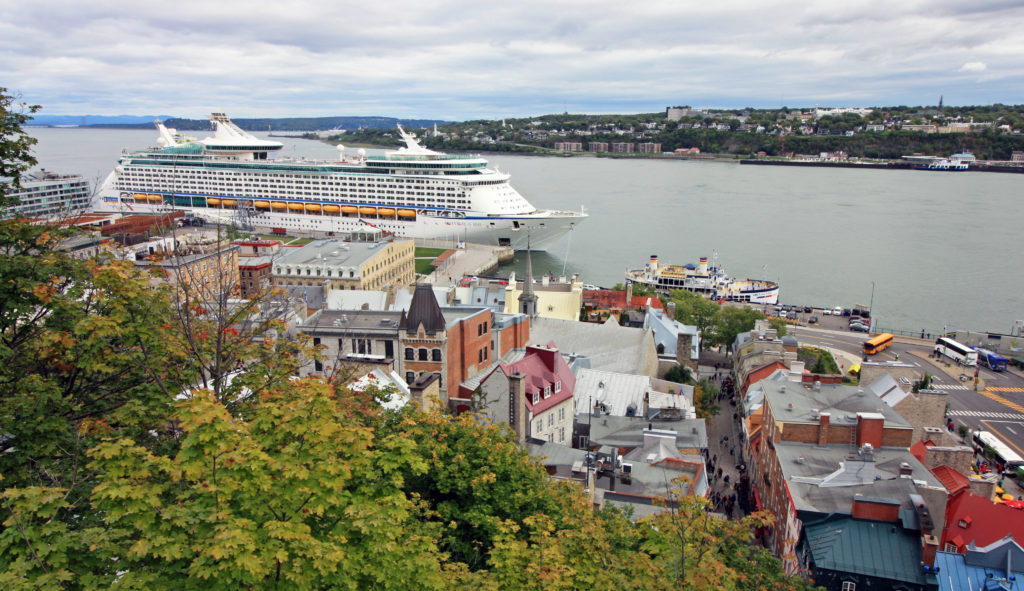
Our view of a cruise ship on the St. Lawrence River.
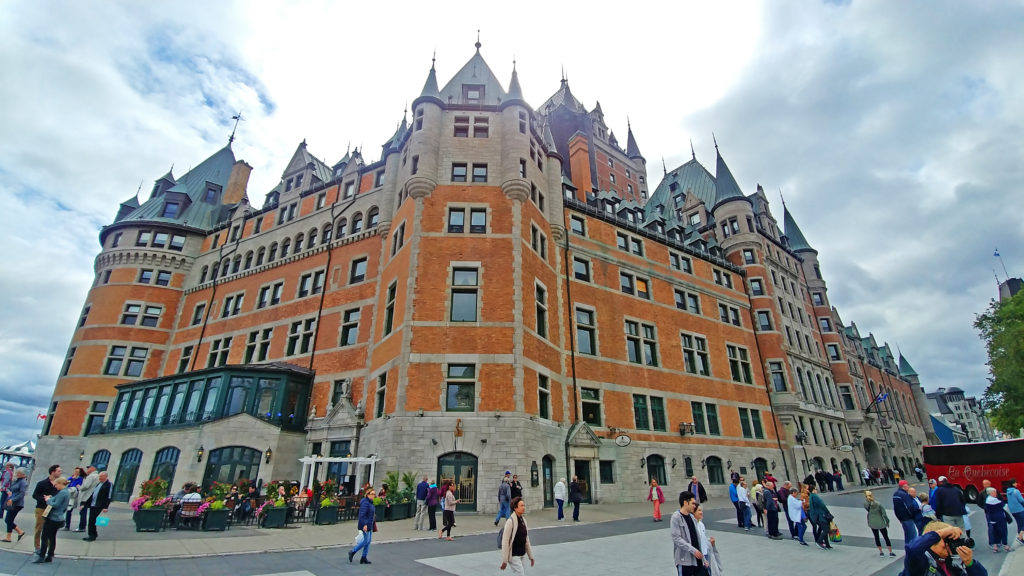
Le Chateau Frontenac in Quebec City.
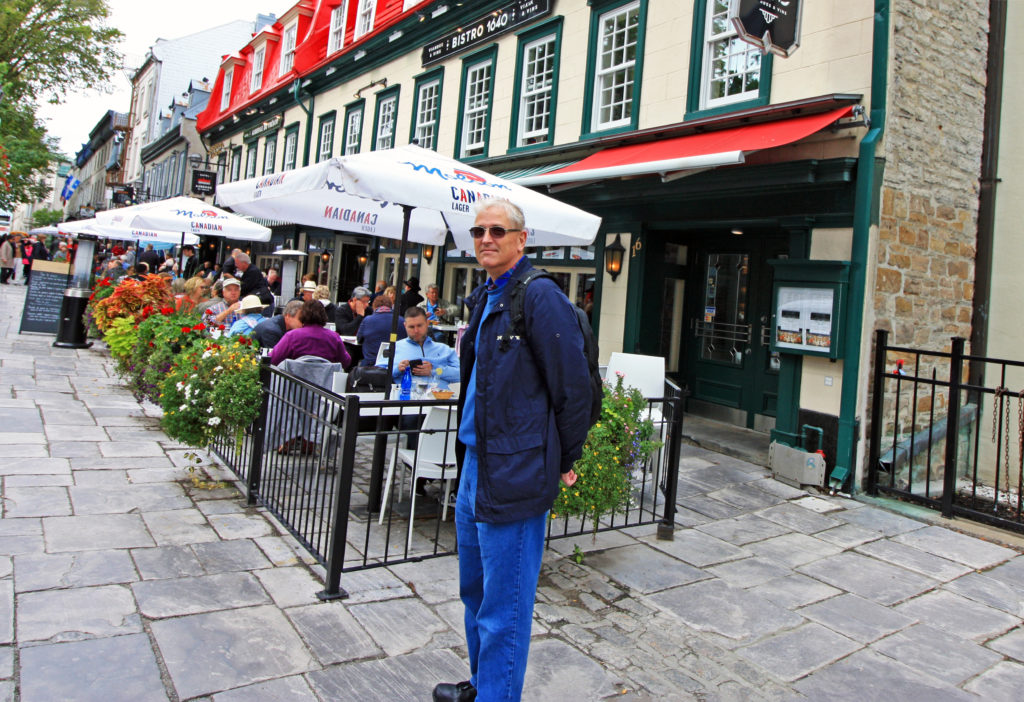
Rodge standing by a bistro in Quebec City.
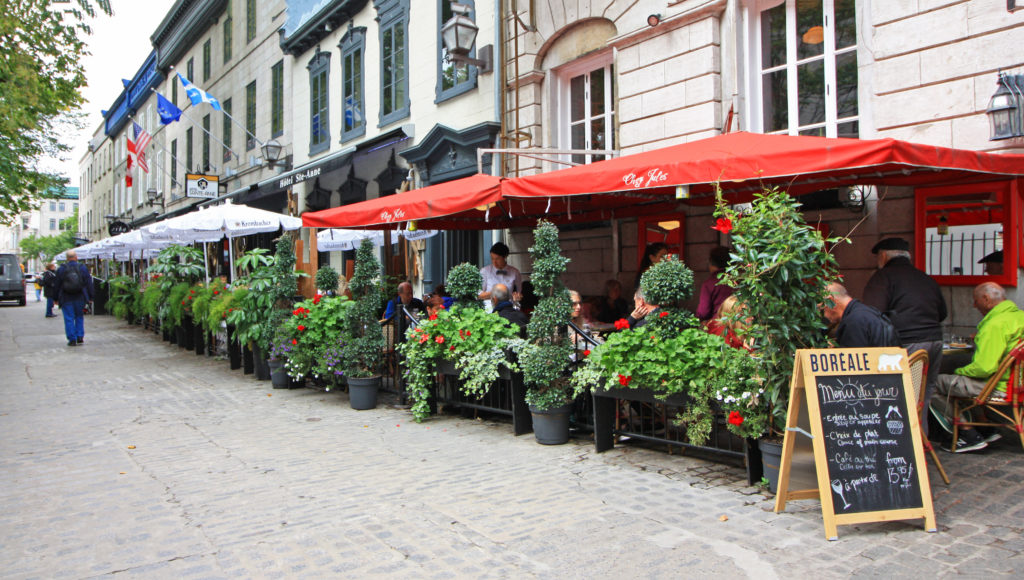
The upper town area in Quebec City.
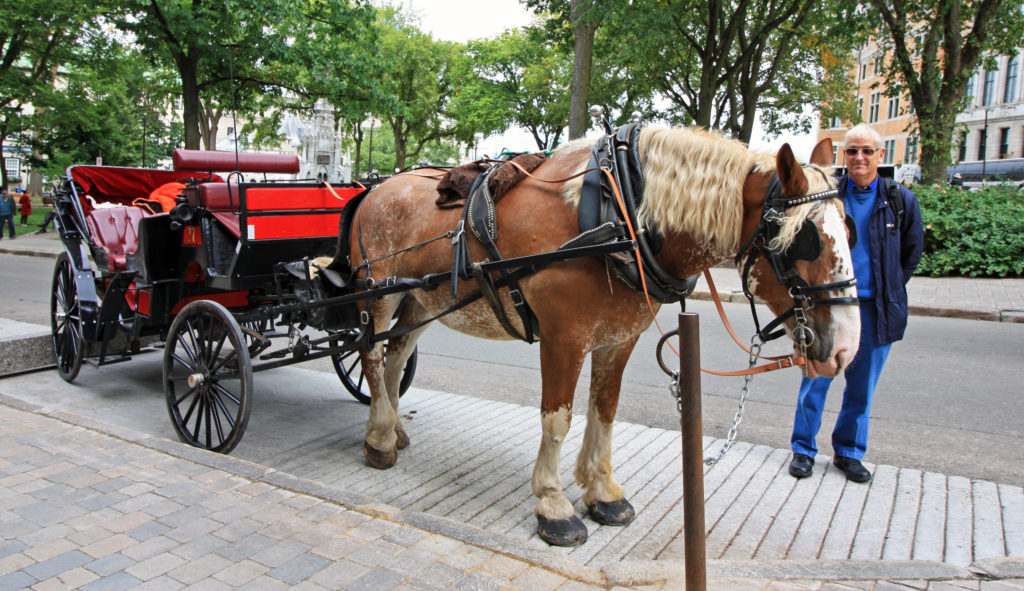
Rodge standing next to a horse drawn carriage.
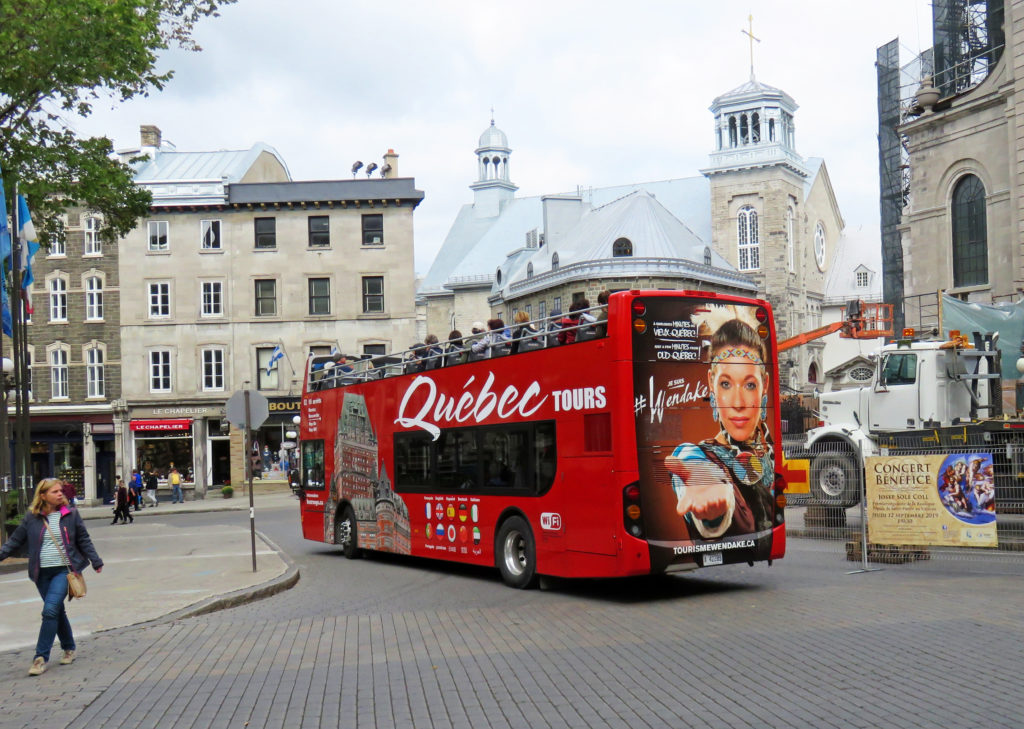
A tour bus driving through Quebec City.
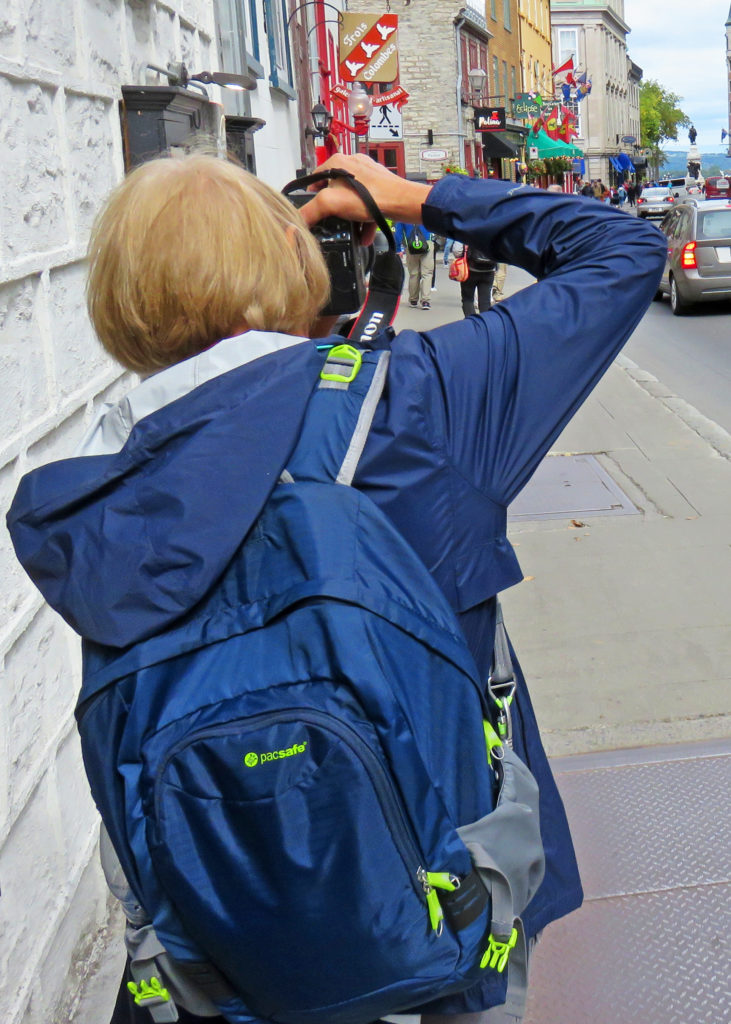
Kathy capturing memories in Quebec City.
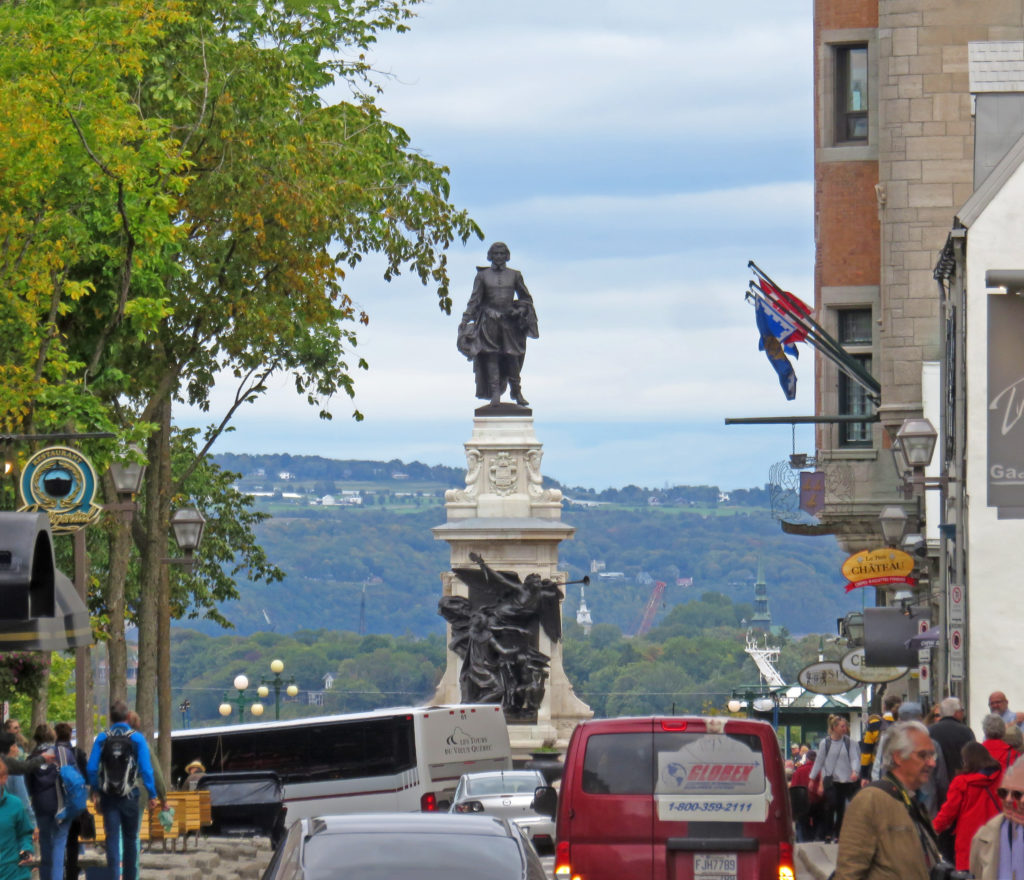
The statue of French explorer Samuel de Champlain.


Leave a Reply